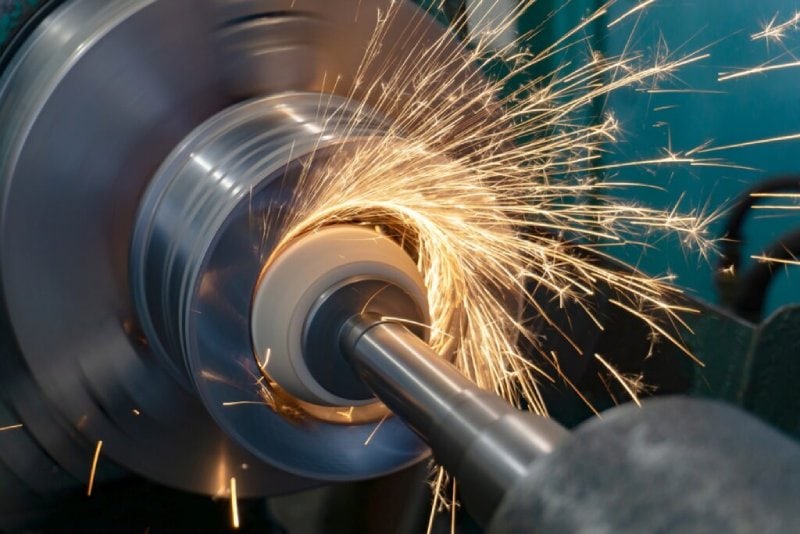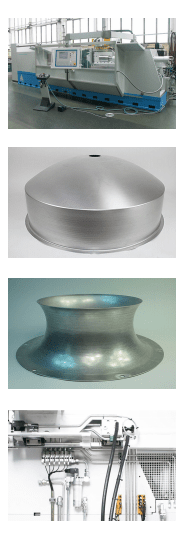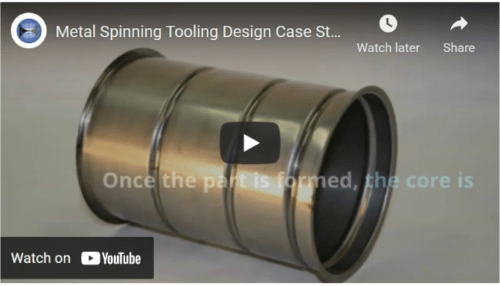Metal spinning is a forming process used to make hollow parts, typically with a circular cross-section. A flat metal disc, called a blank, rotates on a lathe and is pressed against a tool, called a mandrel, which forms the metal disc into the desired shape.
The Spinning Process in Detail
Metal spinning is a cold forming process wherein a blank metal flows over a tool (mandrel) to form a part — much like a piece of clay on a potter’s wheel. Using a machine that is similar to a lathe, the blank is clamped in between the spinning mandrel and a follower (mounted on the tailstock spindle).
The mandrel, blank, and follower are then rotated at controlled speeds, and the mandrel is pressed into the blank either by hand or by auxiliary power. Once the part is formed, the ends are trimmed to the desired length and a Duckbill spinning tool is spun at 1200+ RPM for finishing.
Spinning is commonly used for forming conical shapes. In this case, deformation of the blank occurs according to the Sine Law: the wall thickness of the finished part, t2, is equal to the wall thickness of the starting blank, t1, multiplied by the sine of the semi-apex angle of the cone.
When working with cones that have very small apex angles (in other words a sharper point), multiple spinning passes with progressively sharper cone angles should be used to prevent undue stresses on the part.
Tools Used for Spinning
Tools for spinning are made from various types of wood, plastic, and steel, depending on the design specifications of the part. They can also be grouped into three main categories: male, female, and collapsible.
A male tool is the most common type of spinning tool. It simply replicates the interior dimensions of the part. The blank is formed around the outside of the tool as the tool is pressed against it.
A female tool surrounds the blank when pressed against it, so that the blank is shaped by the interior of the tool. They are suitable for forming flanges and returns.
Collapsible tools are used for parts with variable diameters. They feature a removable center core that holds the outside of the tool in place during spinning. Once the part is formed, the core is removed and the rest of the tool can be removed from the part as well. The tool must be reassembled for the next piece to be spun.
Tool tips are mounted on long handles so that there is plenty of room to work the blank down the length of the tool — handles can be up to three feet long, and are usually made from one-inch diameter steel rod. Typically, a roller is mounted on the end of the long handle.
A wide variety of tool profiles are used for spinning. The Sheep’s Nose is the most common tool shape used for forming, while a Duckbill is commonly used for finishing operations.
Lubricants are always required during spinning to facilitate the removal of the part from the mandrel and to improve the quality of the part’s finish. Lubrication occurs both before and during spinning to ensure an adequate supply of lubricant on the part. Typical lubricants used include: wax, tallows, soaps, and grease.



